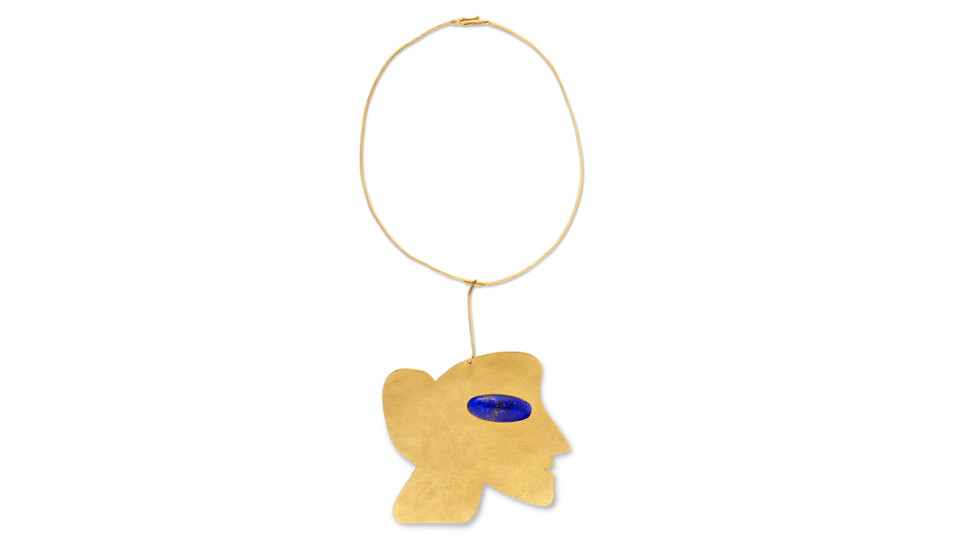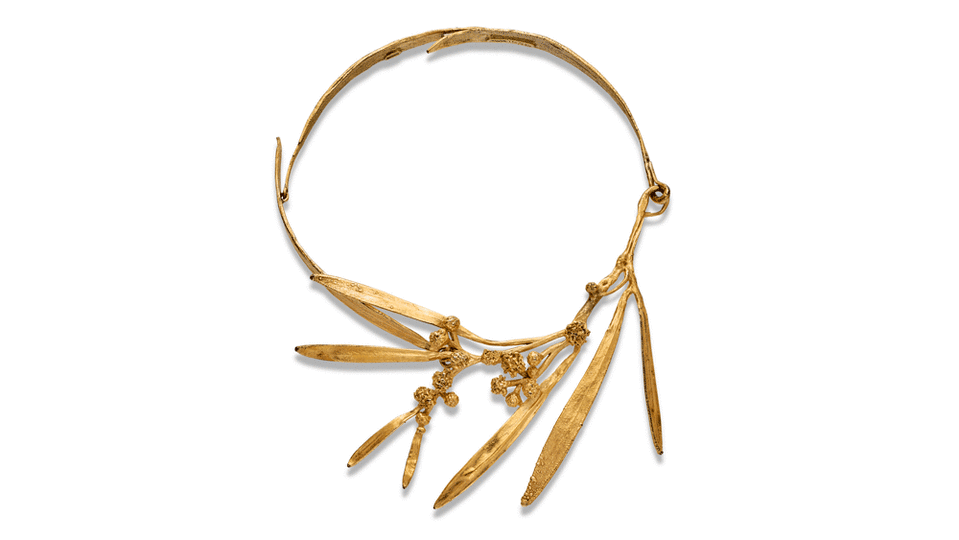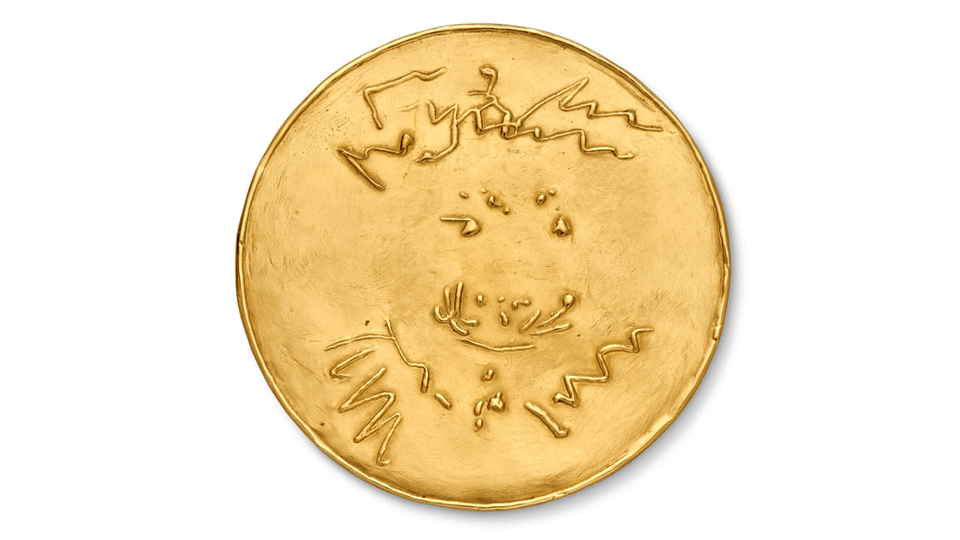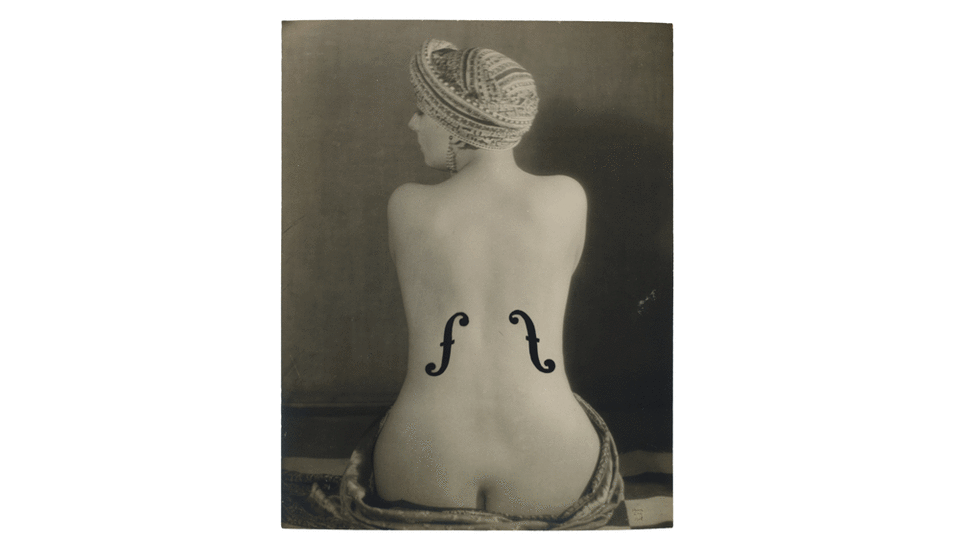Surrealist Jewelry by Man Ray and Max Ernst Will Star in Christie’s Next Big Sale

- Oops!Something went wrong.Please try again later.
- Oops!Something went wrong.Please try again later.
- Oops!Something went wrong.Please try again later.
- Oops!Something went wrong.Please try again later.
Surrealism, if you haven’t noticed, is having a moment. There’s the Tate Modern’s “Surrealism Beyond Borders” exhibition in London, through August 29; the “Surrealism and Magic: Enchanted Modernity” exhibition at the Peggy Guggenheim Collection in Venice, Italy, through September 22; and, of course, this year’s Venice Biennale, where surrealism is a major theme.
For jewelry lovers, however, the most exciting aspect of the current Surrealist renaissance may well be “The Surrealist World of Rosalind Gersten Jacobs and Melvin Jacobs,” a May 14 Christie’s sale featuring jewelry, paintings, drawings, sculptures, prints and photographs that capture the essence of Surrealist art.
More from Robb Report
The Royals' Jeweler Just Unveiled a Limited-Edition Pin and Pendant for the Queen's Platinum Jubilee
This Massive 228-Carat Diamond Known as 'The Rock' Sold for Nearly $22 Million
The 101-Carat Cartier Art Deco Bracelet Could Fetch Up to $1.25 Million at Auction

Christie's
Due to be sold in two parts, a live auction of 77 lots that takes place in New York and an accompanying online sale, the collection tells the story of Rosalind Gersten Jacobs and Melvin Jacobs, married New Yorkers who rose through the ranks of the fashion retail world in the 1950s, along the way forging intimate friendships with artists—including Man Ray and William and Noma Copley—at the forefront of the mid-century Surrealist movement.
“They were very much in this Surrealist circle starting in the mid-1950s and because of their personal relationships, there’s a really tight narrative to the collection,” Allegra Bettini, an associate vice president and specialist in the Impressionist and Modern Art department at Christie’s New York, tells Robb Report. “The works have never been on the market before. They were stewarded over the decades and really loved.”
Rosalind Gersten Jacobs, known as “Roz,” was introduced to Surrealism in 1954, when she met William and Noma Copley in New York. (William was an American painter, gallerist and arts patron, and Noma was a fine art jeweler and collector. Both were recognized for their contributions to Surrealism.)
“She credited this meeting as life-changing,” says Bettini. “She was introduced to them at a dinner party and then ran into them at an opening of a Jerome Moross show called ‘The Golden Apple.’”
The Copleys were living in Paris at the time, in a suburb called Longpont, where they regularly hosted gatherings of artists and creatives. “Through this meeting with the Copleys in New York, Roz traveled to Paris that same year, and called on them,” Bettini says. “They were planning a dinner party with Man Ray and his wife, Juliet. They said to her, ‘Why don’t you join us? You’ll get along fantastically.’ And they were right.”

Christie's
The Jacobs were soon introduced to Lee Miller, Max Ernst, Marcel Duchamp and other luminaries of the Surrealist scene. “That’s why we’ve titled this sale ‘The Surrealist World,’” says Bettini. “Because they were embraced by this creative community and by acquiring these pieces, they supported their friends.”
The collection began with a gift that Bill Copley gave to Roz, a gouache on paper by René Magritte called “Eloge de la dialectique.”

Christie's
“She was enamored with it, so he took it off the wall and said, ‘Happy birthday!’” Bettini says. “That really set the tenor of the collection. It’s very personal, it’s intimate and it was acquired through people they knew and loved.”
The jewelry the Jacobses collected is playful and idiosyncratic. Although most of it is made of precious materials, its value lies in its artistic sensibilities. “It’s an exciting moment to be offering these works both in the context of Surrealism and artist jewelry,” says Bettini. “Being able to wear something designed by Man Ray or Noma Copley—it has a story.”

Christie's
Man Ray’s Pendantif-Pendant earrings are a good place to start. Manufactured by Gem Montebello, a Milan-based jewelry maker with whom the artist had become friends, the gold spiral earrings are “based upon a work he created in the ’teens, called Lampshade,” Bettini says. “It was actually a sculpture that would hang from the ceiling, a perfect application for earrings.”

Christie's
The other Man Ray pieces in the sale include his eye-shaped “Oculist” brooch, executed in 18-karat gold and malachite, and also based upon an earlier work, and the “La Jolie” necklace, the first piece of jewelry he designed. “The face shape is based on the profile of his wife, Julia,” says Bettini. “It’s obviously an abstracted view but there’s a very playful use of the stone. It’s very eye-catching but also quite elegant.”
The pieces by Noma Copley—a silver “Necktie” necklace, a pair of silver cuffs shaped like shirt sleeves, and an 18k gold cuff and ring designed to look like buttons—are the quintessential Surrealist statement pieces.

Christie's
“Surrealism is all about taking everyday objects, displacing them and making you rethink their use,” says Bettini.
The sale features a gold brooch/pendant by Pablo Picasso, “Petit barbu,” manufactured by the goldsmith François Hugo, the same jeweler Max Ernst worked with to manufacture the gold “Tête Modern Art” pendant also featured in the sale.

Christie's
The highlight of the sale is undoubtedly “Le Violon d’Ingres,” a 1924 photographic print by Man Ray. Estimated at $5 million to $7 million, it’s expected to break the record for photography.

Christie's
Perhaps the renewed interest in Surrealist art and Surrealism, in general, should come as no surprise. Coined in 1917 by the poet Guillaume Apollinaire, the term gave voice to a movement that bubbled up in response to the world falling apart.
“It plays with notions of reality and illusion—because you may not want to pay so much attention to what’s going on around you,” says Bettini. “There are a lot of applications of Surrealist imagery today—perhaps we can understand why.”
Best of Robb Report
Sign up for Robb Report's Newsletter. For the latest news, follow us on Facebook, Twitter, and Instagram.

